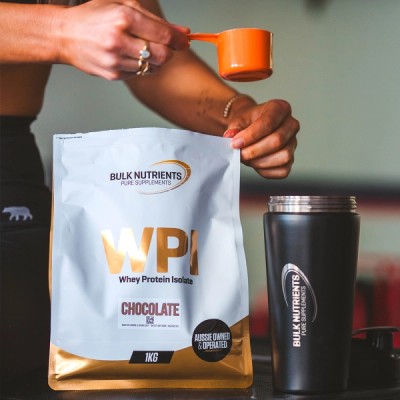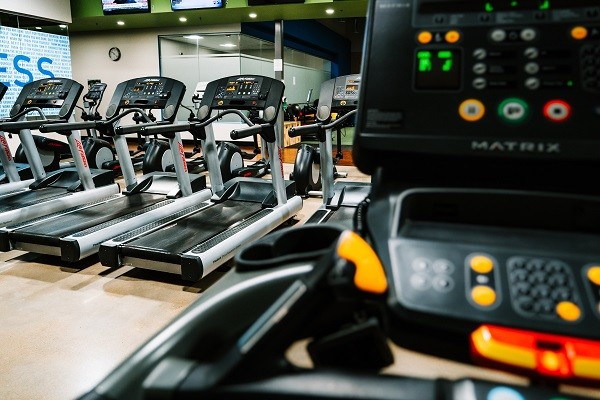
Supplement Powder Densities
Posted by Nick Telesca
Estimated reading time: 7 minutes

Once upon a time, every gym-goer took to the "fat-burning zone" heart rate on various pieces of cardio equipment. It was simple: get on the cross trainer or treadmill and work to a particular heart rate and the fat will melt off better than any other way. But what's the truth of it? Is the fat-burning zone better than other cardio alternatives for fat loss? By the end of this article, you'll know, so you can make the best decisions for your weight loss goals!
Everyone loved the fat-burning zone and nobody questioned it.
Precisely, it was performing cardio at a lower intensity heart rate, and meant people could work less hard than their higher intensity cardio counterparts.
The facts were that more fat was used for fuel in lower-intensity exercise than higher:
Lower intensity = more portion of stored fat for fuel (63% of VO2 max, and dropping off after that, minimal fat burned at 82% of VO2 max).
Higher intensity = more use of glycogen (stored carbohydrate) for energy, far less fat burned.
Well, that was all most gym-goers needed to read.
Why on earth would they bother sweating out the Murray river on their t-shirts on the treadmill, or jack up their heart rates in the cardio area, when they could burn more fat at a lower intensity?
And so the "fat-burning zone" was alive and well, and wasn't going anywhere. Manufacturers even printed it on their cardio equipment and gyms stocked them everywhere.
But hang on a moment...
Most were missing some of (or all) of these three things:
And on that last point, the research was eye-opening.

This study compared fat burned at 3 hours after exercise at 75% of the subjects VO2 max, compared to the same calories burned at 50% of VO2 max.
And they found more fat was burned (although it was insignificant) for the 50% VO2 max group, but significantly higher for the 75% VO2 max group 3 hours after training.
So the old saying is true: you get out what you put in.
No one was "hacking" the system by working less than the person they were chuckling at running at a higher intensity on the treadmill.
Further research examined outcomes in healthy men and women (aged 20-45), 24 hours after a training bout.
In the study, both groups exercised in order to burn the identical amount of calories to the tune of 40% VO2 max, or 70% VO2 max.
So what did they find?
No difference in fat loss after 24 hours.
So in the context of everyday life, the fat-burning zone is really irrelevant.
And one of the big differences between lower intensity exercise or higher intensity exercise is that there are better cardiovascular fitness results from the higher intensity bouts.
So whether or not you burn 300 calories from higher intensity exercise or lower, the differences in fat loss are the same.
Ok, now what about after 15-20 weeks? What version of cardio is better?
In this study, subjects who performed the higher intensity cardio experienced nine times the amount of fat loss! And this was again when the number of calories burned per bout was matched.

More research is needed here, but higher intensity cardio may just win out when it comes to maximum fat burnt here. At the least, it will be the same as lower-intensity cardio.
Maintaining muscle mass is the goal for many, and here is where higher intensity cardio wins out.
Subjects either increase or maintain their lean body mass, but the lower intensity groups tend to lose some muscle mass.
So, the bottom line is that the "fat-burning zone" isn't any better for fat loss compared to a higher intensity approach. Even though short term the fat loss results are better, after 3 hours and 24 hours, the results are the same. Over a period of 15-20 weeks, higher intensity cardio might be better for fat loss but more research is needed. For those looking to keep muscle mass at a maximum level, and/or increase cardiorespiratory fitness, higher intensity cardio should be favoured.

Like many, Dayne was once desperate to lose weight and get into shape. But everyone he asked, everything he read, lead to the same place... nowhere.
His journey started there - researching science journals and completing a Sports Nutrition Specialist qualification so he could make weight loss easier.
With over 700 recipes and articles, the Bulk Nutrients Blog has something for everyone! Find a new workout, meet our ambassadors or take a deep dive into our products today.
We're an Australian manufacturer and supplier of high quality sports supplements.
Operating since 2008, Bulk Nutrients has become one of the premier Australian brands to supply nutritional products to top level athletes, competitors and those on a journey to a healthier lifestyle.
One thing that sets Bulk Nutrients apart is that we love to talk to our customers!
Whether you need product advice, help with the website or need a change made to your order... call us on +61 3 6266 4725.
If you prefer email you can email us day or night at info@bulknutrients.com.au
For online chat, hit the 'Chat' button in the bottom right hand corner of your screen and you'll be connected to one of our lovely customer service team.
Or if you'd like to get in touch through our online contact form, that's cool too!
Terms & ConditionsSustainability StrategyPrivacy PolicyPayment InformationSitemap
All prices are in Australian dollars (AUD) and include GST unless otherwise stated.
All content copyright © Bulk Nutrients 2008 - 2024